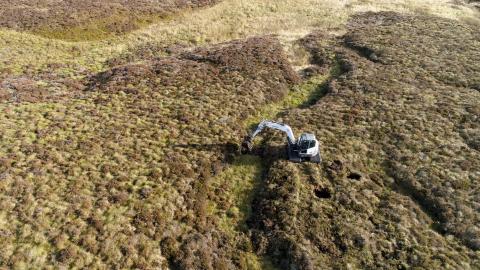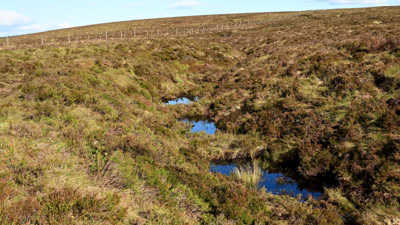
We are assessing whether blanket bog restoration can aid in protecting or enhancing recovery from the impacts of nitrogen deposition. Nitrogen pollution has significant impacts on nutrient-poor systems such as bogs; and suitable management options to mitigate impacts need to be developed.
This work is funded by the Scottish Government’s Rural Environment Science and Analytical Services (RESAS) funded Strategic Research Programme (SRP) 2022-2027.
Background:
Pollution from nitrogen deposition has considerable ecological impacts through acidification and nutrient enrichment.
For some habitats there are possible management options to help mitigate impacts, such as grazing and mowing to remove nutrients and reduce competition for light. Management options for blanket bog are limited, but we are investigating whether restoration can help mitigate these impacts. Raising the water table as part of restoration could reduce some of the detrimental impacts of nitrogen on the system, for example.
We are sampling pairs of restored and unrestored sites to assess how the restoration has changed the nutrients in the dominant plants and in the underlying peat.
You can find out more about the peatland restoration at Glensaugh here.
Key Outputs
This project is still at the data collection phase.
Collaborators/partners
The work has been developed in association with NatureScot and SEPA.
Contact
- Robin Pakeman: email
